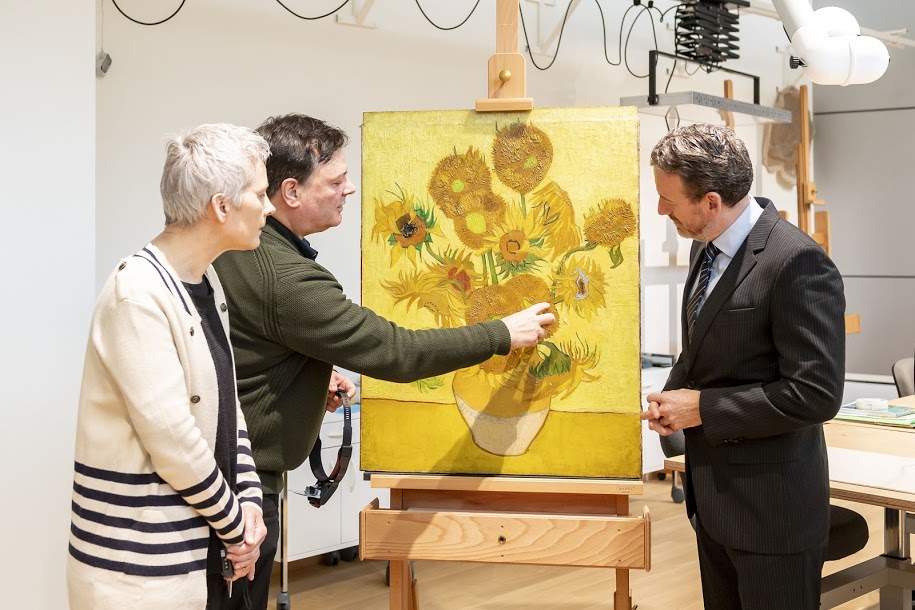The Van Gogh Museum in Amsterdam, after careful analysis, has determined that the Sunflowers by Vincent van Gogh (Zundert, 1853 - Auvers-sur-Oise, 1891) will never travel again. Too fragile and delicate to indulge in new travels, "this is why we have decided that the Sunflowers will no longer leave the museum," said Van Gogh Museum director Axel Rüger. “From now on, this masterpiece from our collection will remain at home, in Amsterdam, available for all our visitors to see every day of the year,” the director added.
Analysis on the Sunflowers has been going on for two years: a team of specialists from around the world, led by Ella Hendriks (a restorer and professor of Restoration at the University of Amsterdam) and counting on experts from the universities of Antwerp, Perugia, and ToruÅ„, has been conducting a thorough investigation of the work’s state of preservation using the latest technology, so as to gather as much information as possible about the canvas, the layers of the painting, and the restoration work previously conducted on the painting. From this new study it will then be decided whether the work should undergo a new restoration, and what should be done to preserve the Sunflowers for future generations to see as well.
However, the work, executed as many as 130 years ago, is in such a state that it can no longer afford to travel. “One conclusion of the study,” Rüger pointed out, “is that the paint layers are stable, but they are very sensitive to vibrations and changes in humidity and temperature. So it is important that the work moves as little as possible, and that it is exposed in a stable climate environment. In any case, to avoid any risk, we have decided that the work will no longer travel.” However, the painting has been lent very sparingly in the past: only six times in the 46 years it has been in the museum. Sunflowers last left in 2014, when the work left for the National Gallery in London for a comparison with the version housed in the British museum.
Still, research has shown how the colors used by van Gogh tend to fade over time (and back in 2015 another study came to the same conclusion): some of the original colors have already been partially lost. "We know that the color changes in the Sunflowers,“ said Ella Hendriks, ”are caused by one particular type of red paint, geranium lacquer, which fades over time, and another, chrome yellow, which darkens instead.“ Thanks to the analysis, the restorer added, ”we got a lot of information about the restorations conducted in the past, and the consequences they had. There are several layers of varnish on the painting, many of them added later, so not by van Gogh. These layers of varnish are dirty and yellowed, but they cannot be removed because in some places the layers of paint and varnish have mixed. In addition, a layer of wax was also added in some areas to secure the paint and make the surface more opaque." This layer of wax, added during a 1990s restoration, will be removed.
The Sunflowers will return to public view from Feb. 22, and this summer, from June 21 to Sept. 1, they will be featured in an exhibition that will reveal more information to the public about the most recent research and conservation work.
Pictured is Van Gogh Museum director Axel Rüger announcing with restorers Ella Hendriks and René Boteille that the work will no longer travel.
 |
| Amsterdam, van Gogh's Sunflowers will never travel again: too delicate |
Warning: the translation into English of the original Italian article was created using automatic tools. We undertake to review all articles, but we do not guarantee the total absence of inaccuracies in the translation due to the program. You can find the original by clicking on the ITA button. If you find any mistake,please contact us.